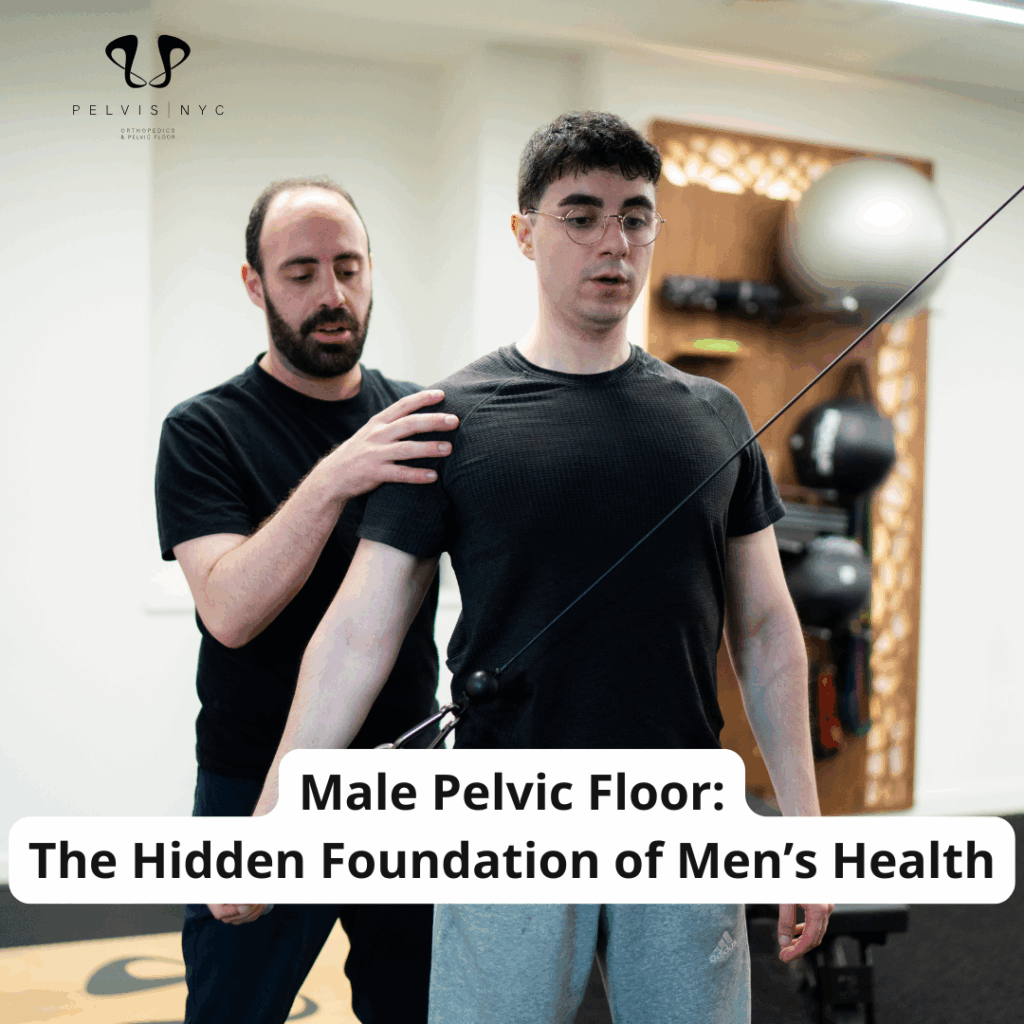Chronic pelvic pain is a debilitating condition that affects many men. However, it is often misdiagnosed or overlooked by healthcare providers. If you are one of the many men experiencing chronic pelvic pain, know that there is hope for relief. Pelvic floor muscle training (PFMT), also known as pelvic floor therapy, is a non-invasive treatment option that can provide relief for men with chronic pelvic pain. In this blog post, we’ll discuss what chronic pelvic pain is, how PFMT can help, and what exercises and techniques can be used to manage this condition.
Understanding Chronic Pelvic Pain

Imagine being constantly in pain and discomfort in your pelvic area, making it difficult to enjoy daily activities or engage in intimate moments with your partner. That’s the reality for many men who suffer from chronic pelvic pain.
Chronic pelvic pain is pain that lasts for at least six months. In some cases, chronic pelvic pain can be associated with conditions like pelvic organ prolapse, where pelvic organs such as the bladder or rectum descend due to weakened pelvic floor muscles. It affects the area below the belly button, including the pelvic floor muscles. It can be caused by a variety of factors, such as inflammation, nerve damage, or muscle tension. Common symptoms of chronic pelvic pain include pain during sex, difficulty urinating or having bowel movements, and discomfort in the pelvic area.
How PFMT Can Help
Pelvic floor muscle training is a type of physical therapy that focuses on strengthening and relaxing the pelvic floor muscles. It can be used to treat a variety of conditions, including chronic pelvic pain. By strengthening the pelvic floor muscles, PFMT can improve bladder control and bowel control. It can also help manage urinary incontinence by providing better support to the bladder. It can also reduce pain during sex and improve overall pelvic health.
Pelvic Floor Muscle Exercises Training Techniques
Now that you understand the importance of PFMT, let’s dive into the different exercises and techniques that can be used to manage chronic pelvic pain.
- Kegels – These exercises involve contracting and relaxing the pelvic floor muscles. It can help improve bladder and bowel control, as well as reduce pain during sex.
- Biofeedback – This technique uses sensors to monitor muscle activity in the pelvic floor. It can help men learn how to properly engage and relax the correct muscles.
- Trigger point release – This technique involves applying pressure to specific areas of the pelvic floor. This is done to release tension and improve blood flow.
- Pelvic devices – Tools such as vaginal cones can assist in strengthening the pelvic floor muscles by providing resistance during exercises.
Tips for Starting PFMT
If you’re interested in starting PFMT to manage your chronic pelvic pain, here are a few tips to keep in mind:
- Consult with a healthcare provider first to rule out any underlying medical conditions.
- Find a qualified physical therapist who specializes in pelvic floor muscle training.
- Be patient and consistent with your exercises. It can take time to see results, but the benefits of PFMT are well worth the effort.
PFMT can also help reduce stress incontinence, which is the involuntary leakage of urine during physical activities such as coughing or lifting.
How to Get Started with Pelvic Floor Muscle Training
Before starting any pelvic floor muscle exercises, it’s important to consult with a healthcare provider or a pelvic floor physical therapist to assess your condition and create a personalized treatment plan. They can help you determine the right exercises to do and the proper technique to perform them, ensuring you are effectively targeting your pelvic muscles.
Once you have the go-ahead from your healthcare provider, you can start your pelvic floor muscle training at home. Here are some tips to get started:
- Find the correct muscles: The first step in pelvic floor muscle training is to identify the muscles you need to work on. One way to do this is to try stopping the flow of urine midstream while using the restroom. The muscles you use to do this are your pelvic floor muscles, so it’s easy to find! Kegel exercises strengthen these muscles by contracting and relaxing them regularly.
- Practice regularly: Consistency is key when it comes to exercises that strengthen your pelvic floor. Start with a few sets of exercises each day, and gradually increase the intensity and duration over time.
- Use proper technique: Proper technique is important to make sure you’re targeting the right muscles and avoiding any strain or injury, especially if you have weak pelvic floor muscles. Proper technique ensures that you are effectively supporting your pelvic organs, such as the bladder and uterus.
- Incorporate pelvic floor exercises into your routine: Pelvic floor muscle training can be done anytime, anywhere, and can be easily incorporated into your daily routine. For example, you can do Kegel exercises while sitting at your desk, watching TV, or brushing your teeth. Incorporating these exercises into your routine can also enhance sexual function by improving muscle control and sensation.
Pelvis NYC for Pelvic Floor Muscle Training
Pelvis NYC is the top choice for individuals seeking effective treatment for chronic pelvic pain. Our expert pelvic floor physical therapist offers personalized care and innovative treatments that address the root cause of your pain. We prioritize your comfort and privacy, ensuring that your journey to recovery is as smooth and stress-free as possible.
Start your PFMT journey today with Pelvis NYC and take the first step towards a pain-free future.




No comment yet, add your voice below!